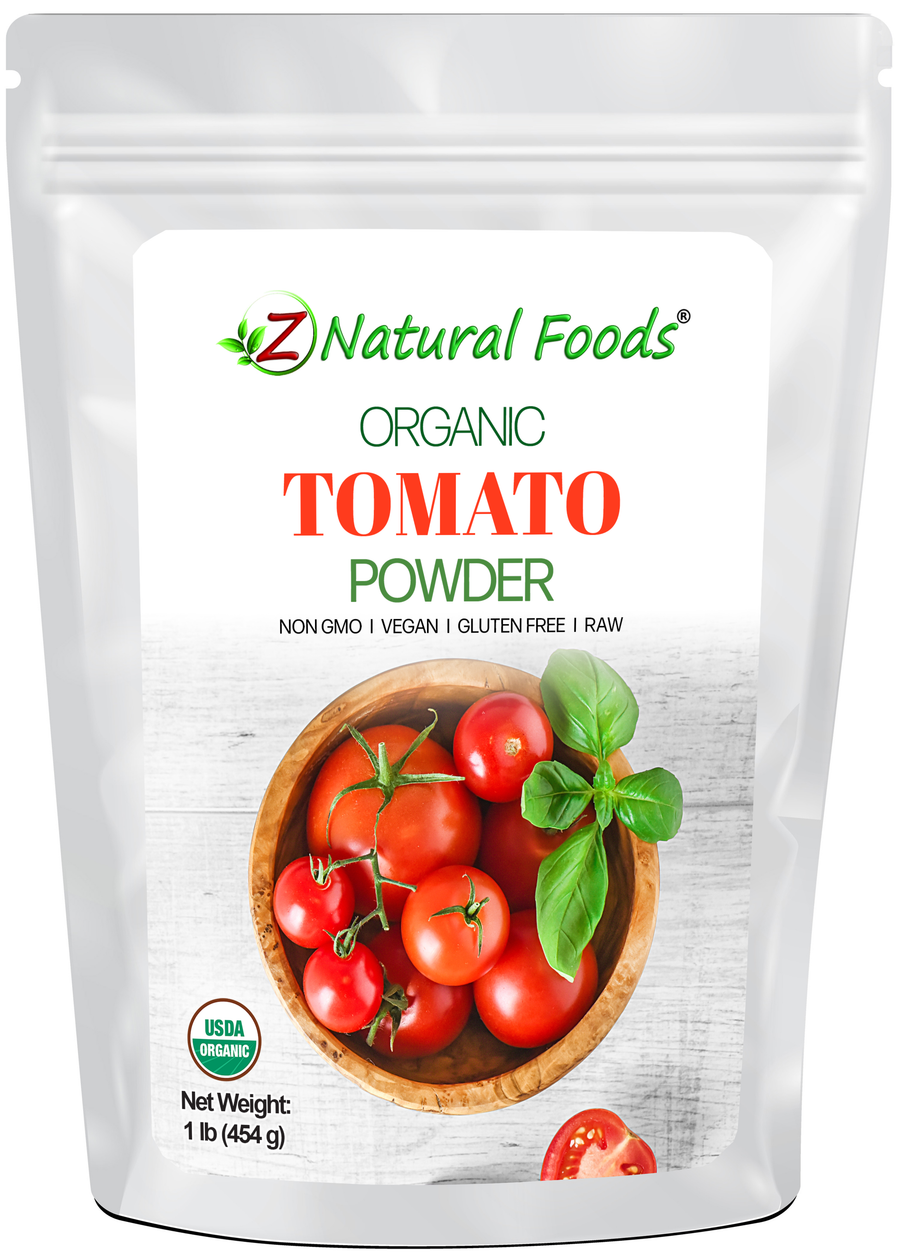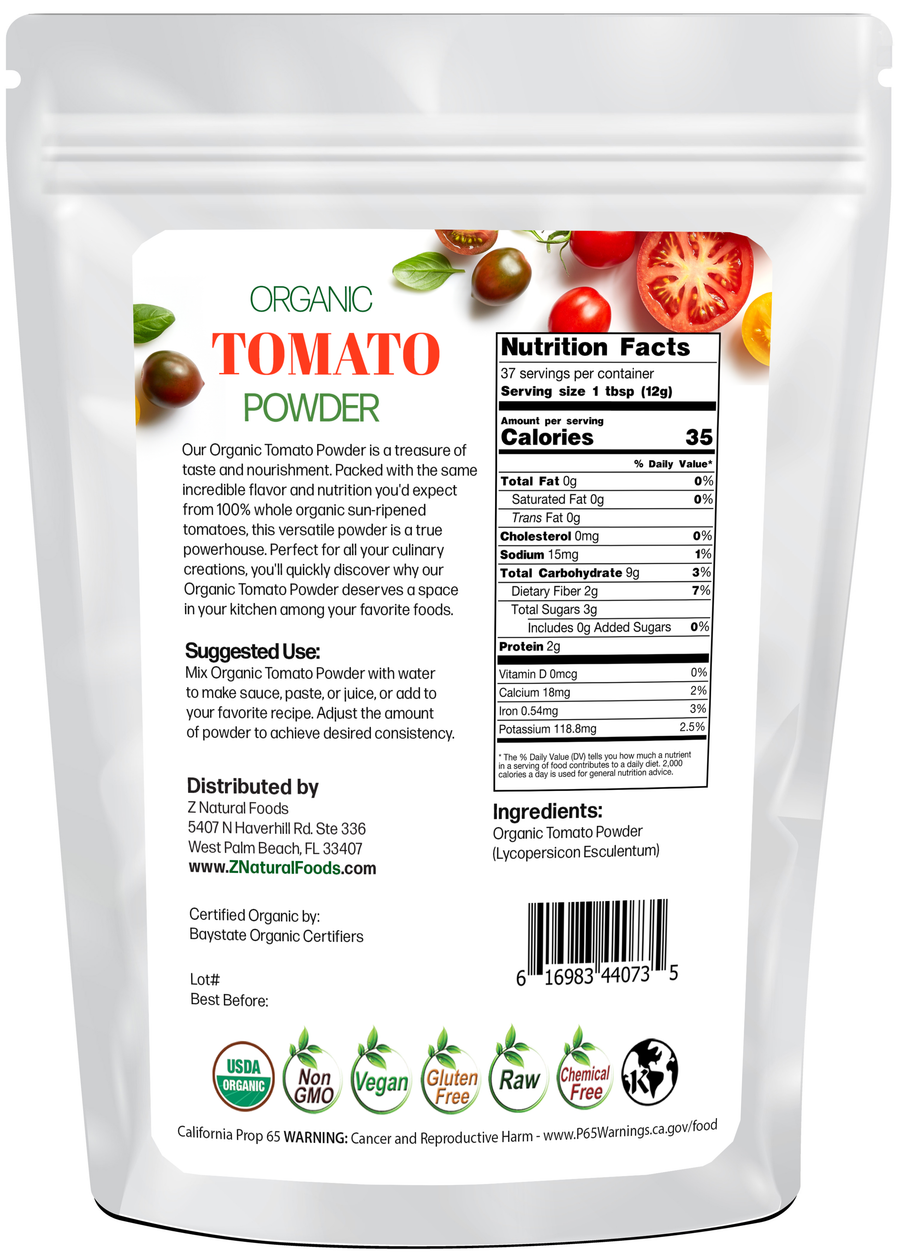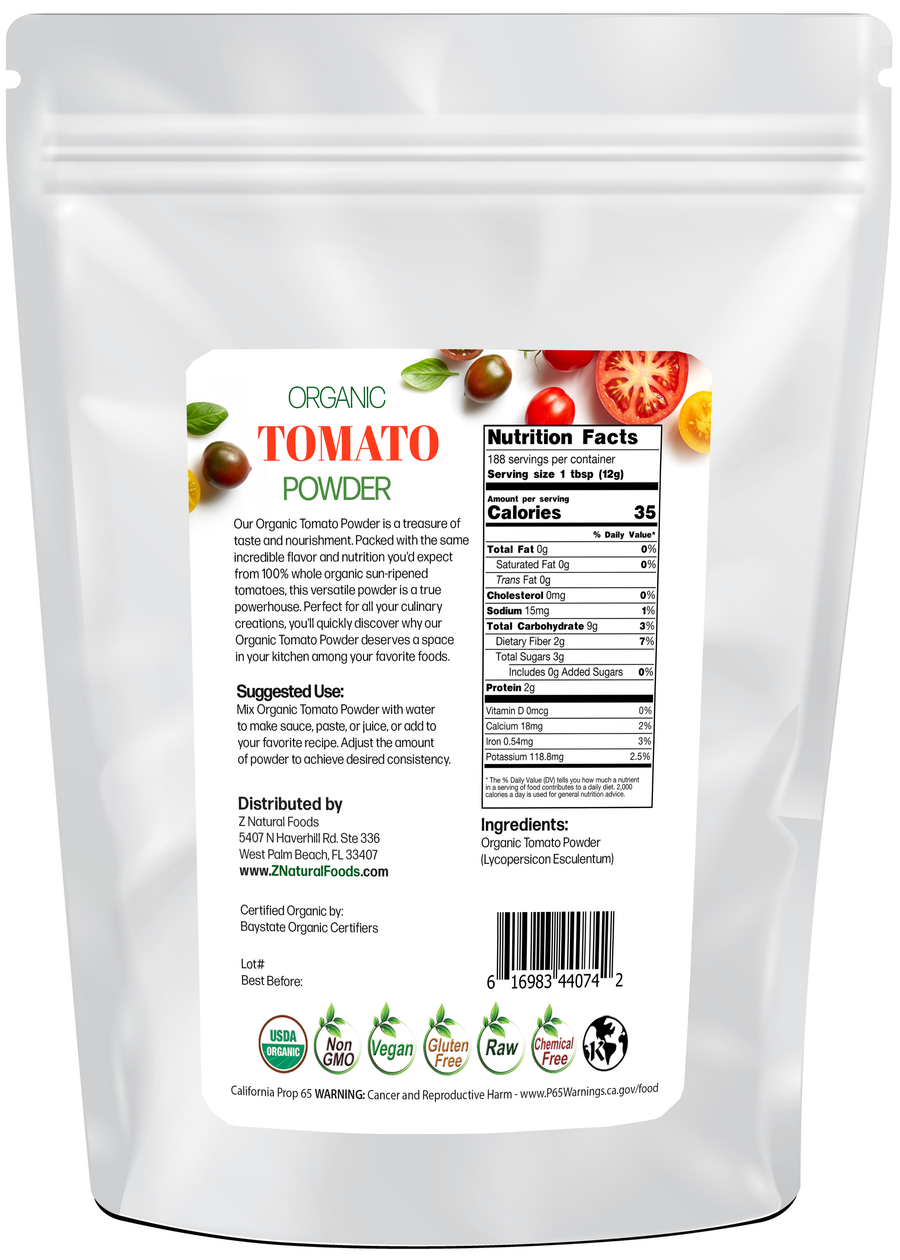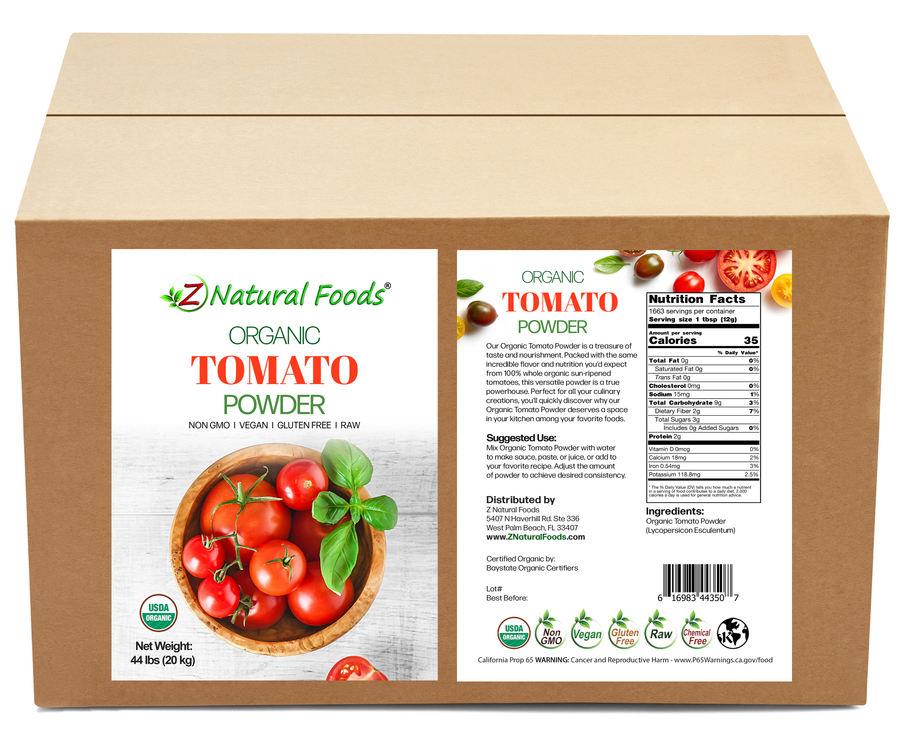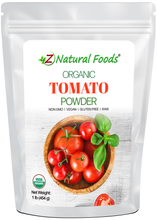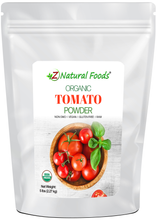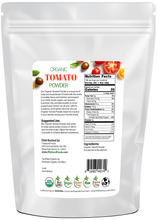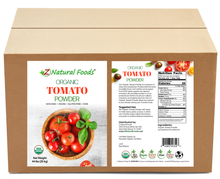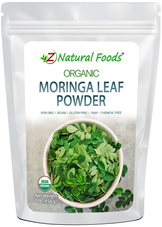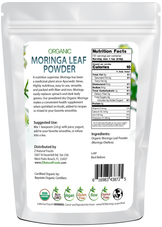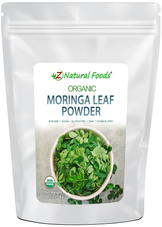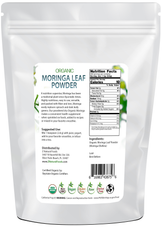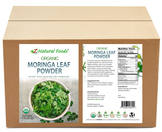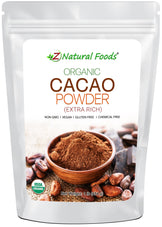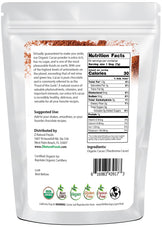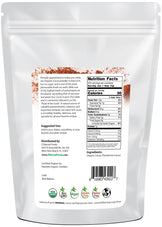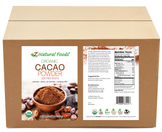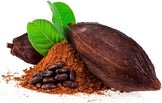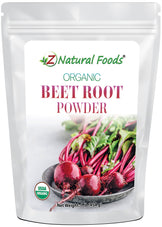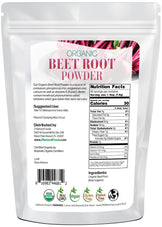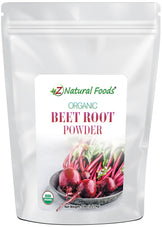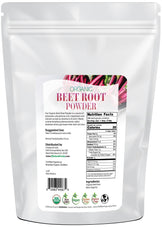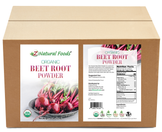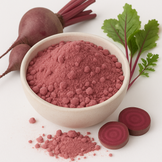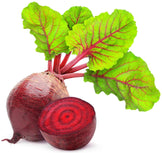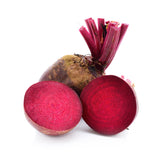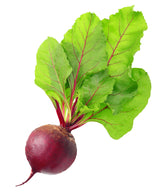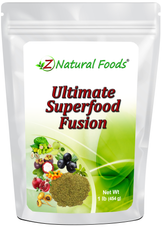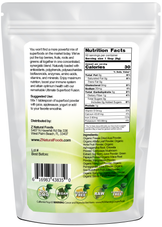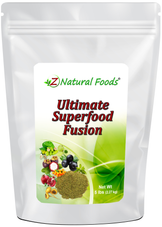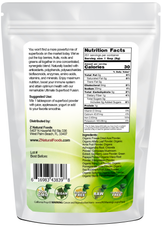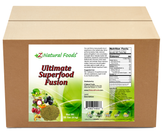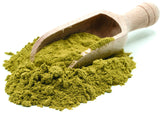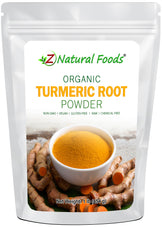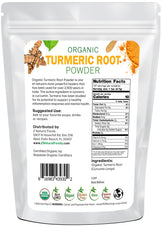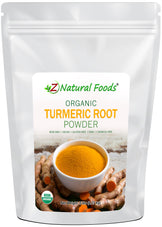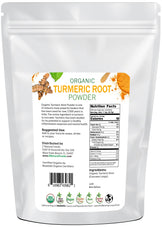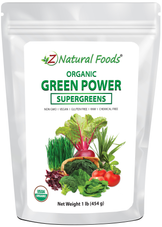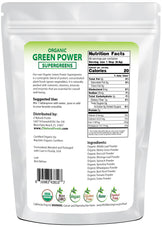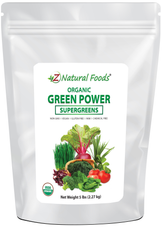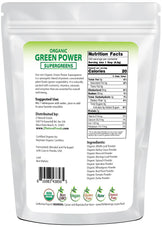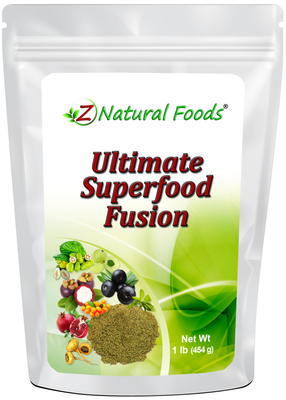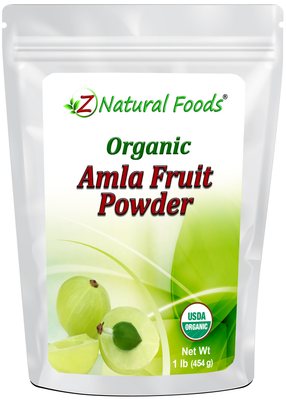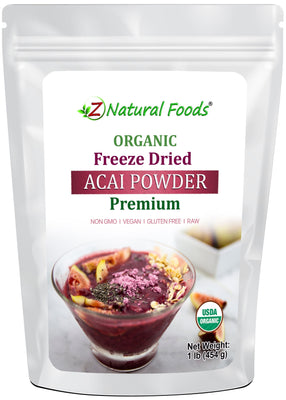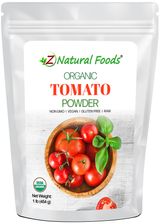About Product
Tomato Powder is made from ripe tomatoes that are carefully dried and ground into a fine, flavorful powder. With its naturally sweet and tangy taste, it’s a convenient way to enjoy the essence of tomatoes without the need for fresh produce. It mixes easily into soups, sauces, and stews, or can be used as a seasoning in rubs and spice blends.
Shelf-stable and versatile, tomato powder is also perfect for enhancing pasta dishes, casseroles, dips, and even baked goods. Its rich color and concentrated flavor make it an easy pantry staple for adding depth and a burst of tomato taste to recipes year-round.
This product is 100% natural and minimally processed. Taste, smell, texture, and color vary from batch to batch. Due to its nature, this powder tends to clump a lot! When clumping occurs, lay the bag on a flat surface and place a towel over the bag. Then pound on the bag until the clumps break up. The towel will help protect the bag from damage.
Suggested Use: Mix Organic Tomato Powder with water to make sauce, paste, or juice, or add to your favorite recipe. Adjust the amount of powder to achieve desired consistency. For Tomato Sauce, mix 1/2 cup of tomato powder with one cup of water. For Tomato Paste, mix 1/2 cup of tomato powder with 1/2 cup of water.
Mixing suggestions: To increase flavor and nutritional profile, combine with our organic kale, spinach, and carrot powders.
Botanical Name: Lycopersicon esculentum
Other Names: Golden Apple, Love Apple, Tomast, Common tomato, Tomate, Pomodoro.
Parts Used: Whole Tomato (including seeds and skin).
Ingredients: Organic Tomato Powder.
Origin: Grown and dried in the USA and packaged with care in Florida, USA.
Certifications: Certified USDA Organic.
How to Maintain Optimum Freshness
- This product is packaged in airtight stand-up, resealable foil pouches for optimum freshness.
- Once opened, push the air out of the pouch before resealing it to preserve maximum potency.
- Keep your powder in a cool, dark, dry place.
This product is 100% natural and minimally processed:
Taste, smell, texture, and color vary from batch to batch. Go here to learn why our products may naturally vary.
The important protections we take to bring you safe and nutritious superfoods:
Please go here to discover the essential steps we take to deliver fresh, quality nutrition.
Bulk Quantities?
Need to order a large quantity of our products? We are happy to help! Please get in touch with our Bulk department to discuss the details.
* Product packaging, pictures, and origin may vary.
Sources & References
1. Solanaceae Source: Phylogeny of the genus Solanum". Natural History Museum. "Molecular phylogenetic analyses have established that the formerly segregate genera Lycopersicon, Cyphomandra, Normania, and Triguera are nested within Solanum, and all species of these four genera have been transferred to Solanum"
2. a b c d e f g h i j k l Smith, A. F. (1994). The Tomato in America: Early History, Culture, and Cookery. Columbia SC, USA: University of South Carolina Press. ISBN 1-57003-000-6.
3. Donnelly, L. (2008-10-26). "Killer Tomatoes". The East Hampton Star. Retrieved 2008-10-27.
4. A History of the Tomato in Italy Pomodoro!. David Gentilcore (New York, NY: Columbia University Press, 2010).
5. "British Consuls in Aleppo "“ Your Archives". Yourarchives.nationalarchives.gov.uk. 2009-01-26. Retrieved 2009-04-02.
6. "Syria under the last five Turkish Sultans". Appletons' Journal. 1. D. Appleton and Co.. 1876. p. 519.
7. The Friend. 54. 1881. p. 223.
8 a b c About Reynoldsburg, City of Reynoldsburg. Retrieved 2010-27-7.
9. "C. M. Rick Tomato Genetics Resource Center". UC Davis. Retrieved 2009-04-02.
10. "UC Newsroom, UC Davis Tomato Geneticist Charles Rick Dies at 87". University of California. 2002-05-08. Retrieved 2009-04-02.
11. David Gentilcore. Pomodoro! A History of the Tomato in Italy (Columbia University Press, 2010), scholarly history
12. "Uniform ripening Encodes a Golden 2-like Transcription Factor Regulating Tomato Fruit Chloroplast Development". Science 336 (6089): 1711"“1715. June 29, 2012. doi:10.1126/science.1222218. Retrieved June 29, 2012. "Modern tomato...varieties are bred for uniform ripening (u) light green fruit phenotypes to facilitate harvests of evenly ripened fruit. U encodes a...factor...which determines chlorophyll accumulation and distribution in developing fruit. [The factor] influences photosynthesis in developing fruit, contributing to mature fruit characteristics and suggesting that selection of u inadvertently compromised ripe fruit quality in exchange for desirable production traits."
13. Gina Kolata (June 28, 2012). "Flavor Is Price of Scarlet Hue of Tomatoes, Study Finds". The New York Times. Retrieved June 29, 2012.
14. a b c Allen, A. (August 2008). "A Passion for Tomatoes". Retrieved 2009-12-11.
15. Hartz, T. et al.. "Processing Tomato Production in California". UC Vegetable Research and Information Center.
16. FAOSTAT, Crop statistics
17. Yissum: Seed improvement technology
18. Pfleger, F. L.; Zeyen, R. J. (2008). "Tomato-Tobacco Mosaic Virus Disease". University of Minnesota Extension. Retrieved 2012-06-23.
19. Hahn, J.; Fetzer, J. (2009). "Slugs in Home Gardens". University of Minnesota Extension. Retrieved 2012-06-23.
20. Narvaez-Vasquez, J.; Orozco-Cardenas, M. L. (2008). "15 Systemins and AtPeps: Defense-related Peptide Signals". In Schaller, A.. Induced Plant Resistance to Herbivory. ISBN 978-1-4020-8181-1.
21. Carrots Love Tomatoes.
22. a b V. P. Sharma (16 January 2012). Nature at Work - the Ongoing Saga of Evolution. Springer. p. 41. ISBN 978-81-8489-991-7.
23. Jones, J. Benton. "Growing in the Greenhouse". growtomatoes.com. Retrieved 14 August 2012.
24. "Selecting, Storing and Serving Ohio Tomatoes, HYG-5532-93". Ohio State University. Retrieved 2008-10-27.
25. Redenbaugh, K.; Hiatt, B.; Martineau, B.; Kramer, M.; Sheehy, R.; Sanders, R.; Houck, C.; Emlay, D. (1992). Safety Assessment of Genetically Engineered Fruits and Vegetables: A Case Study of the Flavr Savr Tomato. CRC Press. p. 288.
26. "Health benefits of tomatoes". Retrieved 2007-05-24.
27. "No magic tomato? Study breaks link between lycopene and prostate cancer prevention". Retrieved 2007-05-24.
28. "Tomato dishes 'may protect skin'". BBC News. 2008-04-28. Retrieved 2010-01-06.
29. Maccrae, F.. "The secret of eternal youth? Try a tomato". Retrieved 2008-04-28.
30. Mourvaki, E.; Gizzi, S.; Rossi, R.; Rufini, S. (2005). "Passionflower Fruit "” A "New" Source of Lycopene?". Journal of Medicinal Food 8 (1): 104"“106. PMID 15857218.
31. Zhang, C. X.; Ho, S. C.; Chen, Y. M.; Fu, J. H.; Cheng, S. Z.; Lin, F. Y. (2009). "Greater vegetable and fruit intake is associated with a lower risk of breast cancer among Chinese women". International Journal of Cancer 125 (1): 181"“188. doi:10.1002/ijc.24358. PMID 19358284.
32. Freedman, N. D.; Park, Y.; Subar, A. F.; Hollenbeck, A. R.; Leitzmann, M. F.; Schatzkin, A.; Abnet, C. C. (2008). "Fruit and vegetable intake and head and neck cancer risk in a large United States prospective cohort study". International Journal of Cancer 122 (10): 2330"“2336. doi:10.1002/ijc.23319. PMID 18092323.
33. Rao, A. V.; Balachandran, B. (2002). "Role of oxidative stress and antioxidants in neurodegenerative diseases". Nutritional Neuroscience 5 (5): 291"“309. doi:10.1080/1028415021000033767. PMID 12385592.
34. Fall, P. A.; Fredrikson, M.; Axelson, O.; Granérus, A. K. (1999). "Nutritional and occupational factors influencing the risk of Parkinson's disease: A case-control study in southeastern Sweden". Movement Disorders 14 (1): 28"“37. doi:10.1002/1531-8257(199901)14:13.0.CO;2-O. PMID 9918341.
35. Suganuma, H.; Hirano, T.; Arimoto, Y.; Inakuma, T. (2002). "Effect of tomato intake on striatal monoamine level in a mouse model of experimental Parkinson's disease". Journal of Nutritional Science and Vitaminology 48 (3): 251"“254. doi:10.3177/jnsv.48.251. PMID 12350086.
36. PolÃvková, Z.; Å merák, P.; Demová, H.; HouÅ¡ka, M. (2010). "Antimutagenic Effects of Lycopene and Tomato Purée". Journal of Medicinal Food 13 (6): 1443"“1450. PMID 20874227.
37. Shidfar, F.; Froghifar, N.; Vafa, M.; Rajab, A.; Hosseini, S.; Shidfar, S.; Gohari, M. (2011). "The Effects of Tomato Consumption on Serum Glucose, Apolipoprotein B, Apolipoprotein A-I, Homocysteine and Blood Pressure in Type 2 Diabetic Patients". International Journal of Food Sciences and Nutrition 62 (3): 289"“294. PMID 21138408.
38. a b c d "Home Storage Guide for Fresh Fruits & Vegetables". Canadian Produce Marketing Association.
39. a b c Mcgee, H. (2009-07-29). "Accused, Yes, but Probably Not a Killer". The New York Times. Retrieved 2010-03-26.
40. a b Barceloux, D. G. (2009). "Potatoes, Tomatoes, and Solanine Toxicity (Solanum tuberosum L., Solanum lycopersicum L.)". Disease-a-Month 55 (6): 391"“402. doi:10.1016/j.disamonth.2009.03.009. PMID 19446683.
41. a b "Executive Summary Chaconine and Solanine: 6.0 through 8.0". NIH.
42. Brevitz, B.. Hound Health Handbook: The Definitive Guide to Keeping your Dog Happy. p. 404.
43. "CDC Probes Salmonella Outbreak, Health Officials Say Bacteria May Have Spread Through Some Form Of Produce". CBS News. 2006-10-30. Retrieved 2008-10-27.
44. "A selection of North American tomato related outbreaks from 1990"“2005". Food Safety Network. 2006-10-30. Retrieved 2010-07-20.
45. "Tomatoes taken off menus". Calgary Herald. 2008-06-11. Retrieved 2010-07-20.
46. Peet, M.. "Crop Profiles "“ Tomato". Retrieved 2008-10-27.
47. paul2101. "Are there different types of tomato leaves?". IVillage. Retrieved 2008-10-27.
48. Acquaah, G. (2002). Horticulture: Principles and Practices. New Jersey: Prentice Hall.
49. Lycopersicon esculentum, International Plant Name Index
50. Peralta, I. E.; Spooner, D. M. (2001). "Granule-bound starch synthase (GBSSI) gene phylogeny of wild tomatoes (Solanum L. section Lycopersicon (Mill.) Wettst. subsection Lycopersicon)". American Journal of Botany 88 (10): 1888"“1902. doi:10.2307/3558365. JSTOR 3558365. PMID 21669622.
51. Jacobsen, E.; Daniel, M. K.; Bergervoet-van Deelen, J. E. M.; Huigen, D. J.; Ramanna, M. S. (1994). "The first and second backcross progeny of the intergeneric fusion hybrids of potato and tomato after crossing with potato". TAG Theoretical and Applied Genetics 88 (2): 181"“186. doi:10.1007/BF00225895.
52. [url = http://tgrc.ucdavis.edu/lycopersicoides_ils.aspx]
53. Mueller, L.. "International Tomato Genome Sequencing Project". Sol Genomics Network. Retrieved 2009-10-21.
54. Ramanujan, K. (2007-01-30). "Tomato genome project gets $1.8M". News.cornell.edu. Retrieved 2008-10-27.
55. "Tomato Genome Shotgun Sequence Prerelease".
56. Sato, S.; Tabata, S.; Hirakawa, H.; Asamizu, E.; Shirasawa, K.; Isobe, S.; Kaneko, T.; Nakamura, Y. et al. (2012). "The tomato genome sequence provides insights into fleshy fruit evolution". Nature 485 (7400): 635"“641. doi:10.1038/nature11119. PMC 3378239. PMID 22660326.
57. Tomato genome is sequenced for the first time http://www.rdmag.com. Retrieved June 2, 2012.
58. "Vegetarians in Paradise/Tomato History, Tomato Nutrition, Tomato Recipe". Vegparadise.com. Retrieved 2009-04-02.
59. Hammerschmidt, D.; Franklin, M. (2005). "About the cover illustration". Journal of Laboratory and Clinical Medicine 146 (4): 251"“252. doi:10.1016/j.lab.2005.08.010. PMID 16194687.
60. "Curiosities of I-5, facts about King and the benefits of volunteers". Chester Progressive. 2008-01-16.
61. A World Record Breaker Nutriculture.com. Retrieved 2010-07-27.
62. a b Walt Disney World News
63. "Spain's tomato fighters see red". ITV. August 30, 2007. Retrieved 2009-04-02.
64. Aldrich HT, Salandanan K, Kendall P et al. Cultivar choice provides options for local production of organic and conventionally produced tomatoes with higher quality and antioxidant content. J Sci Food Agric. 2010 Dec;90(15):2548-55. 2010.
65. Anthon GE, LeStrange M, and Barrett DM. Changes in pH, acids, sugars and other quality parameters during extended vine holding of ripe processing tomatoes. J Sci Food Agric. 2011 May;91(7):1175-81. 2011.
66. Bai Y and Lindhout P. Domestication and Breeding of Tomatoes: What have We Gained and What Can We Gain in the Future? . Ann Bot. 2007 October; 100(5): 1085-1094. Published online 2007 August 23. 2007.
67. Borguini RG and Torres EAFDS. Tomatoes and Tomato Products as Dietary Sources of Antioxidants. Food Reviews International. Philadelphia: 2009. Vol. 25, Iss. 4; p. 313-325. 2009.
68. Cao XL, Corriveau J, and Popovic S. Bisphenol A in Canned Food Products from Canadian Markets. Journal of Food Protection. Des Moines: Jun 2010. Vol. 73, Iss. 6; p. 1085-1089. 2010.
69. Dilis B and Trichopoulou A. Antioxidant Intakes and Food Sources in Greek Adults. The Journal of Nutrition. Bethesda: Jul 2010. Vol. 140, Iss. 7; p. 1274-1279. 2010.
70. Dogukan A, Tuzcu M, Agca CA et al. A tomato lycopene complex protects the kidney from cisplatin-induced injury via affecting oxidative stress as well as Bax, Bcl-2, and HSPs expression. Nutr Cancer. 2011;63(3):427-34. 2011.
71. Etminan M, Takkouche B, and Caamano-Isorna F. The role of tomato products and lycopene in the prevention of prostate cancer: a meta-analysis of observational studies. Cancer Epidemiol Biomarkers Prev. 2004 Mar;13(3):340-5. 2004. 2004.
72. Friedman M, Levin CE, Lee SU et al. Tomatine-containing green tomato extracts inhibit growth of human breast, colon, liver, and stomach cancer cells. J Agric Food Chem. 2009 Jul 8;57(13):5727-33. 2009.
73. Gonzali S, Mazzucato A, and Perata P. Purple as a tomato: towards high anthocyanin tomatoes. Trends Plant Sci. 2009 May;14(5):237-41. Epub 2009 Apr 8. 2009.
74. Herbette S, de Labrouhe DT, Drevet JR et al. Transgenic tomatoes showing higher glutathione peroxydase antioxidant activity are more resistant to an abiotic stress but more susceptible to biotic stresses. lant Sci. 2011 Mar;180(3):548-53. Epub 2010 Dec 14. 2011.
75. Ishida BK, Chapman MH. A comparison of carotenoid content and total antioxidant activity in catsup from several commercial sources in the United States. J Agric Food Chem. 2004 Dec 29;52(26):8017-20. 2004. PMID:15612790.
76. Jacob K, Garcia-Alonso FJ, Ros G et al. Stability of carotenoids, phenolic compounds, ascorbic acid and antioxidant capacity of tomatoes during thermal processing. Arch Latinoam Nutr. 2010 Jun;60(2):192-8. 2010.
77. Kim YI, Takahashi H, Goto T et al. 9-oxo-10(E),12(E)-octadecadienoic acid derived from tomato is a potent PPAR agonist to decrease triglyceride accumulation in mouse primary hepatocytes. Molecular Nutrition & Food Research, 2010; DOI: 10.1002/mnfr.201000264. 2010.
78. Lazarus SA, Bowen K, Garg ML. Tomato juice and platelet aggregation in type 2 diabetes. JAMA. 2004 Aug 18;292(7):805-6. 2004. PMID:15315994.
79. Lee ST, Wong PF, Cheah SC et al. Alpha-tomatine induces apoptosis and inhibits nuclear factor-kappa B activation on human prostatic adenocarcinoma PC-3 cells. PLoS One. 2011 Apr 26;6(4):e18915. 2011.
80. Lippi G and Targher G. Tomatoes, lycopene-containing foods and cancer risk. Br J Cancer. 2011 Mar 29;104(7):1234-5. Epub 2011 Feb 22. 2011.
81. Mackinnon ES, Rao AV, and Rao LG. Dietary restriction of lycopene for a period of one month resulted in significantly increased biomarkers of oxidative stress and bone resorption in postmenopausal women. J Nutr Health Aging. 2011 Feb;15(2):133-8. 2011.
82. Mathieu S, Dal Cin V, Fei Z et al. Flavour compounds in tomato fruits: identification of loci and potential pathways affecting volatile composition. J Exp Bot. 2009 January; 60(1): 325"“337. Published online 2008 December 16. 2009.
83. Moneruzzaman KM, Hossain ABMS, Sani W et al. Effect of Stages of Maturity and Ripening Conditions on the Biochemical Characteristics of Tomato. American Journal of Biochemistry and Biotechnology Year: 2008 Vol: 4 Issue: 4 Pages/record No.: 336-344. 2008.
84. Nohara T, Ono M, Ikeda T et al. The Tomato Saponin, Esculeoside A. J Nat Prod. 2010 Sep 20. [Epub ahead of print]. 2010.
85. Palozza P, Parrone N, Catalano A et al. Tomato lycopene and inflammatory cascade: basic interactions and clinical implications. Curr Med Chem. 2010;17(23):2547-63. 2010.
86. Reboul E, Borel P, Mikail C et al. Enrichment of Tomato Paste with 6% Tomato Peel Increases Lycopene and {beta}-Carotene Bioavailability in Men. J Nutr. 2005 Apr;135(4):790-4 2005. 2005.
87. Salem S, Salahi M, Mohseni M et al. Major dietary factors and prostate cancer risk: a prospective multicenter case-control study. Nutr Cancer. 2011;63(1):21-7. 2011.
88. Sesso HD, Liu S, Gaziano JM et al. Dietary lycopene, tomato-based food products and cardiovascular disease in women. J Nutr Jul;133(7): 2336-41. 2003. 2003.
89. Shieh JM, Cheng TH, Shi MD et al. a-Tomatine suppresses invasion and migration of human non-small cell lung cancer NCI-H460 cells through inactivating FAK/PI3K/Akt signaling pathway and reducing binding activity of NF-kB. Cell Biochem Biophys. 2011 Jul;60(3):297-310. 2011.
90. Silaste ML, Alfthan G, Aro A, et al. Tomato juice decreases LDL cholesterol levels and increases LDL resistance to oxidation. Br J Nutr. 2007 Dec;98(6):1251-8. 2007. PMID:17617941.
91. Slimestad R and Verheul M. Properties of chalconaringenin and rutin isolated from cherry tomatoes. J Agric Food Chem. 2011 Apr 13;59(7):3180-5. Epub 2011 Mar 4. 2011.
92. Talvas J, Caris-Veyrat C, Guy L et al. Differential effects of lycopene consumed in tomato paste and lycopene in the form of a purified extract on target genes of cancer prostatic cells. Am J Clin Nutr. 2010 Jun;91(6):1716-24. Epub 2010 Apr 14. 2010.
93. Tan HL, Thomas-Ahner JM, Grainger EM et al. Tomato-based food products for prostate cancer prevention: what have we learned? . Cancer Metastasis Rev. 2010 Sep;29(3):553-68. 2010.
94. Torres-Urrutia C, Guzman L, Schmeda-Hirschmann G et al. Antiplatelet, anticoagulant, and fibrinolytic activity in vitro of extracts from selected fruits and vegetables. Blood Coagul Fibrinolysis. 2011 Apr;22(3):197-205. 2011.
95. Visioli F, Riso P, Grande S et al. Protective activity of tomato products on in vivo markers of lipid oxidation. Eur J Nutr. 2003;42(4):201-6. 2003.
96. Willcox JK, Catignani GL, Lazarus S. Tomatoes and cardiovascular health. Crit Rev Food Sci Nutr 2003;43(1):1-18. 2003.
97. http://www.naturalnews.com/042266_tomatoes_stroke_risk_healthy_foods.html
98. http://www.huffingtonpost.com/2012/10/09/tomatoes-stroke-risk-foods_n_1948289.html
99. http://www.foxnews.com/health/2012/10/09/tomato-compound-may-cut-men-stroke-risk
100. http://www.cbsnews.com/8301-204_162-57528204/lycopene-from-tomatoes-may-protect-against-stroke
101. http://www.naturalnews.com/046354_tomatoes_improved_health_disease_prevention.html
102. http://www.sciencedaily.com/releases/2011/03/110301091338.htm
103. http://www.huffingtonpost.com/leo-galland-md/tomatoes-health-benefits_b_886214.html
104. Wood M. Tangerine Tomatoes Top Reds in Preliminary Lycopene Study. Agricultural Research. Washington: Feb 2011. Vol. 59, Iss. 2; p. 15. 2011.
105. http://www.ars.usda.gov/main/site_main.htm?modecode=80-40-05-25
* Reviews & Success Stories Disclaimer
Product reviews solely reflect the views and opinions expressed by the contributors and not those of Z Natural Foods. Z Natural Foods does not verify or endorse any claims made in these reviews. Statements have not been evaluated by the FDA and are not intended to diagnose, treat, cure, or prevent any disease or health condition.REFERRAL PROGRAM
Share your personal link to your friends and welcome them with rewards. Claim yours when they make their first purchase.

GIVE
$10 off discount

GET
$10 off discount
